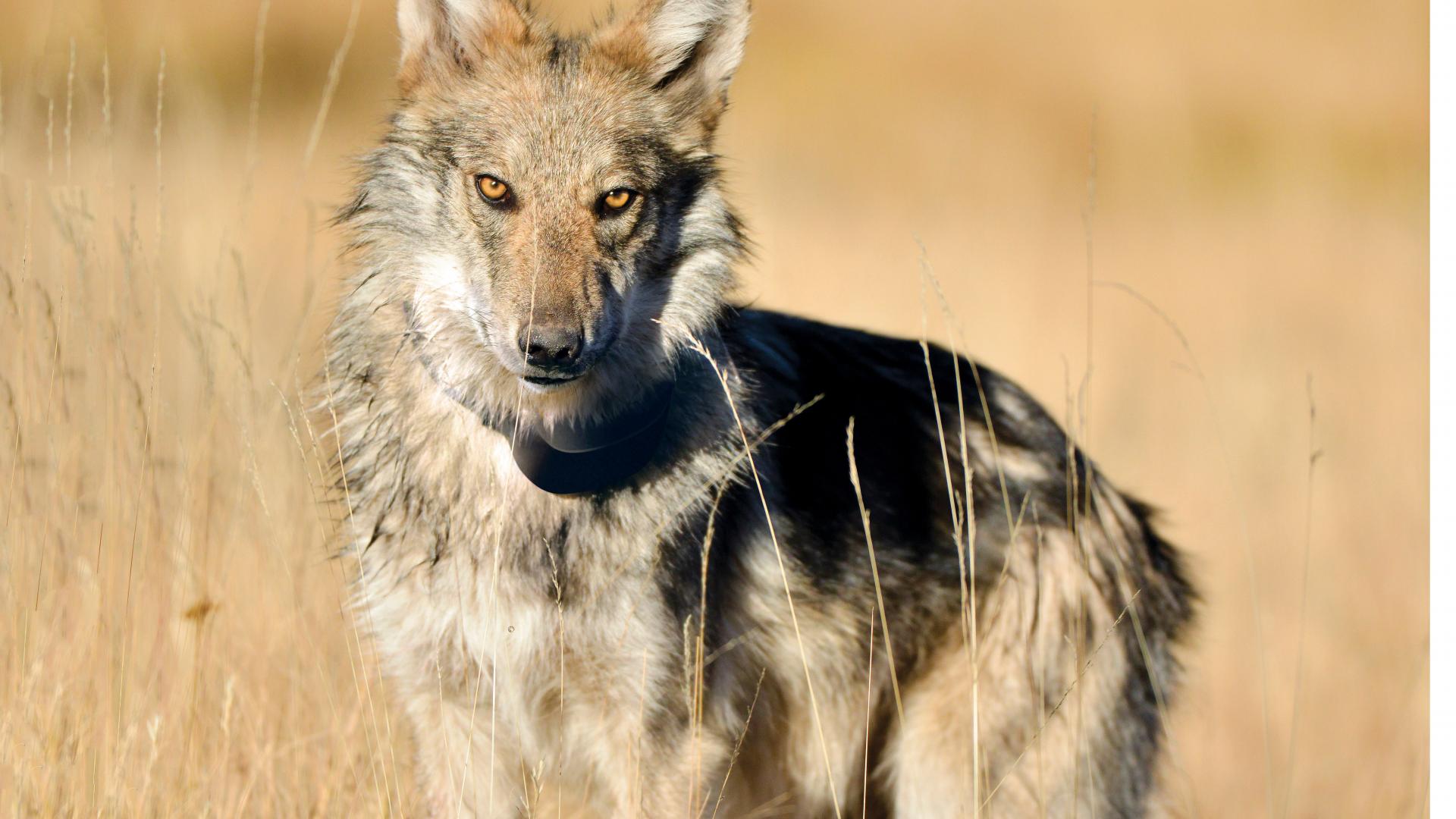
- Body
Mexican Gray Wolves
Mexican gray wolves have been isolated in mountainous regions in the Southwest and Mexico from other wolf populations on all sides, besides the northern boundary in Arizona where the species could hybridize with northern gray wolves. This isolation allowed the Mexican gray wolf to evolve separately from other wolf populations into a smaller animal that preys on Coues' white-tail deer (Odocoileus virginianus couesi). Adult Mexican gray wolves weigh between 70 and 80 pounds, are about 30 inches tall at their shoulders, and are 5 to 5.5 feet long, including their tails (14 to 17 inches).History
In the early 1900s, high stocking rates of livestock and declining populations of native prey such as deer and elk stimulated increased wolf attacks on livestock. Wolf conflicts with livestock and wildlife led to intense efforts to eliminate the threat to the livelihood and food supply of early ranchers and sportsmen. By 1970, private individuals and federal and state governments had nearly eradicated the wolves from the southwestern United States and Mexico. In an effort to save the wolf population, the U.S. Fish and Wildlife Service listed the gray wolf and the Mexican gray wolf subspecies as endangered under the Endangered Species Act of 1976. The listing of the Mexican gray wolf spurred recovery efforts.Between 1977 and 1980, a captive breeding program was initiated by the United States and Mexico. In all, five wolves were captured in the wild in order to initiate the breeding program and save the Mexican gray wolf from extinction. The five wild wolves and two captive wolves became the seven individuals certified as pure-bred Mexican gray wolves and founded the first lineage of the certified captive population. In 1979, the U.S. Fish and Wildlife Service organized a team to determine a recovery strategy for the Mexican gray wolf. The team created the 1982 Mexican Wolf Recovery Plan with the objectives of maintaining a captive breeding program and eventually reintroducing captive wolves into parts of their historic home range.
Wolf Reintroduction Plan
In 1996, the U.S. Fish and Wildlife Service proposed to reintroduce a self-sustaining population of Mexican gray wolves. The project was administrated by five primary agencies: U.S. Fish and Wildlife Service, Arizona Game and Fish Department, White Mountain Apache Tribe, USDA Animal and Plant Health Inspection Service, and USDA Forest Service. The goal of the project was to re-establish at least 100 wild wolves within a portion of the subspecies’ historic range in the southwest United States. With secondary goals of managing wolves and their habitat in a manner that would not negatively impact the lifestyles and economy of local residents, cooperating agencies would closely monitor and study the reintroduced wolves.The Environmental Impact Statement proposed releasing Mexican gray wolves into the Apache National Forest in eastern Arizona and allowing them to expand into the Gila National Forest in western New Mexico. The area is known as the Blue Range Wolf Recovery Area. This portion of the historic range includes middle to high elevations, and is a total of 5,000 square miles.
All wolves within the Blue Range Wolf Recovery Area are designated as a nonessential experimental (10j) population under the Endangered Species Act. The ‘experimental’ designation means that the reintroduced population is threatened or endangered. The ‘nonessential’ designation means that the population is nonessential to the continued existence of the species. This status allows for greater management flexibility during the reintroduction of the Mexican gray wolf to address potential conflicts, including conflicts between livestock and wolves. The nonessential experimental status allows the U.S. Fish and Wildlife Service to respond to the needs of the wolves, relocate wolves, mitigate livestock depredations, and address concerns of local citizens.
On March 28, 1998, the first captive raised Mexican gray wolves were released into the Blue Range Wolf Recovery Area.
Featured Resources From the Database
- Journal Issue/Article
The Mexican gray wolf (Canis lupus baileyi) was historically distributed throughout the southwestern United States and northern Mexico. Extensive predator removal campaigns during…
- Journal Issue/Article
The Mexican wolf (Canis lupus baileyi) was included in the 1973 Endangered Species Act listing of the gray wolf (C. lupus), but then listed separately as a subspecies in 2015. Early…
- Technical Report
The plan aims to maintain a captive breeding program and re-establish a viable, self-sustaining population of at least 100 wolves within their historic range.
- Other
The final Environmental Impact Statement (EIS) regarding the reintroduction of Mexican Gray Wolves in the Southwest.
- Other
Map outlining the Nonessential Experimental Area (10j) Boundary, including the Blue Range Wolf Recovery Area.
- Other
Map of initial release locations and translocation sites for the Mexican wolf, including the primary and secondary recovery zone of the Blue Range Wolf Recovery Area and other…